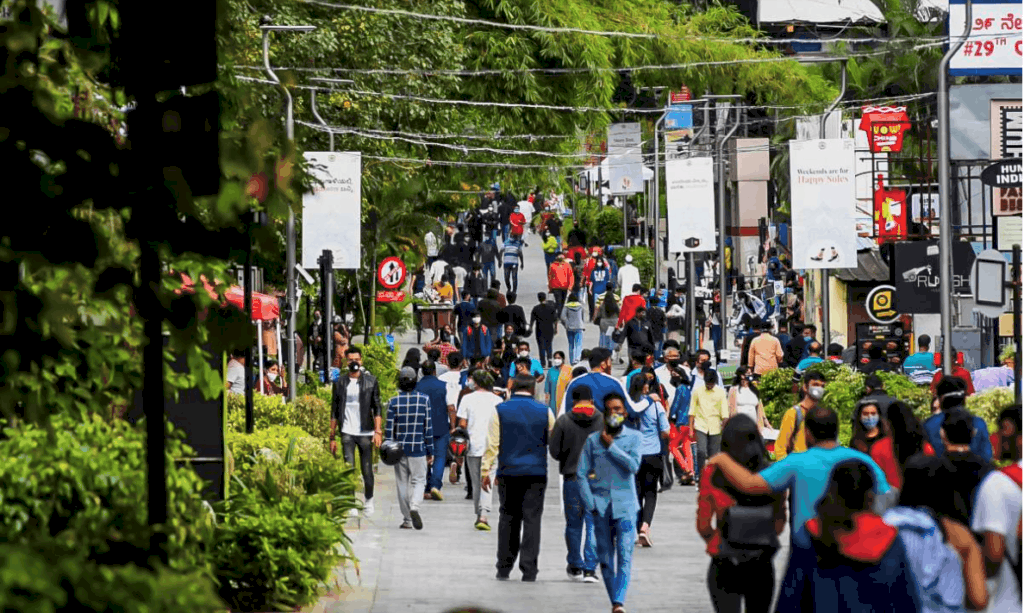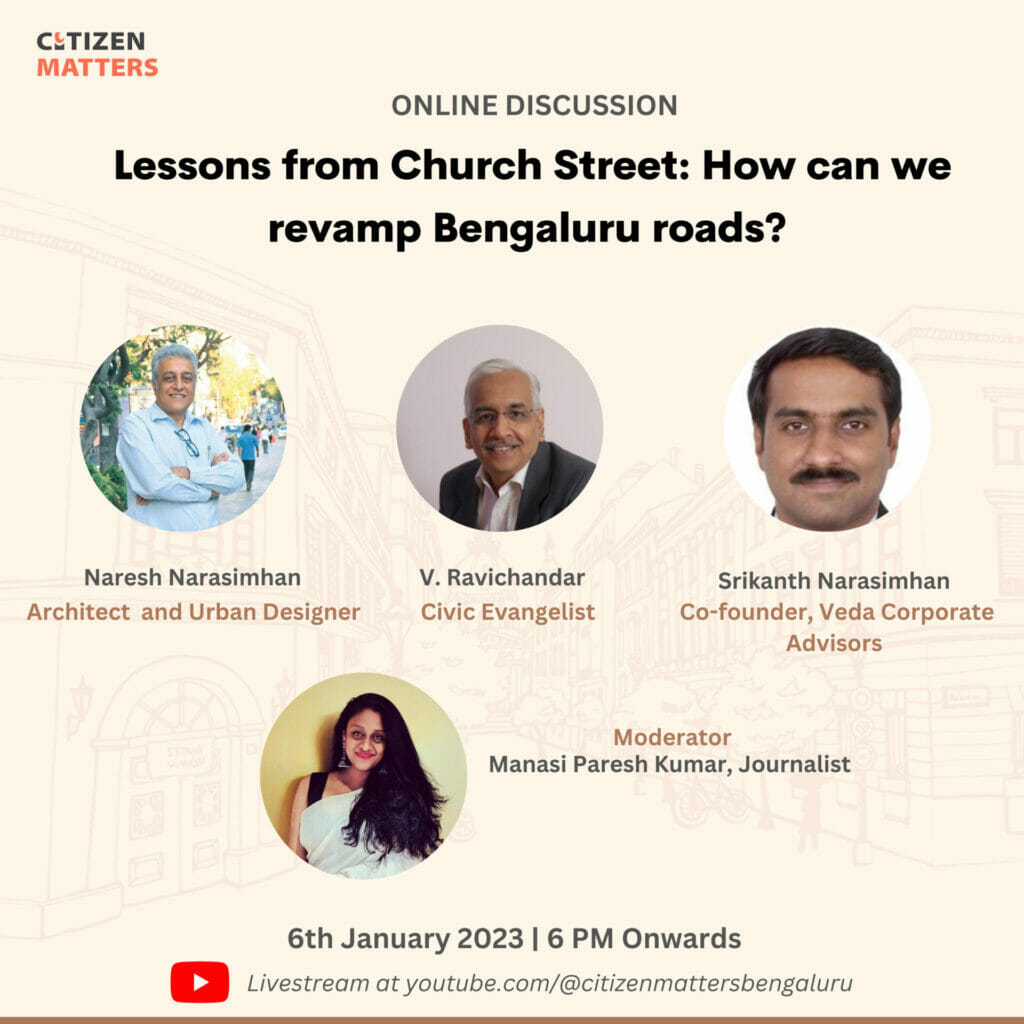In 2018, a revamped Church Street opened to the public with much fanfare. The 715-metre stretch was redesigned along Tender SURE guidelines at a cost of Rs 9 crore. The cobblestoned streets and wide footpaths were welcomed as being pedestrian-friendly, hassle-free for cyclists, and accessible to all.
As in most cities in India, Bengaluru roads often require maintenance and repair due to constant digging up by service providers. To overcome this issue, Bengaluru piloted the state-of-the-art designed Church Street, a first of its kind in India. The project integrated all the networked services under the road: water, sewage, power, gas, and stormwater drains, ensuring minimum disruptions.

However, five years later, Church Street has been both praised for its design and criticised for being high maintenance. Therefore, what lessons can other areas in Bengaluru learn from the redesign of Church Street? What worked in the revamp of Church Street? What needs to improve, both in terms of the process and implementation? What are the key takeaways from the Church Street makeover for future road projects in the city? Citizen Matters has organised a panel discussion to discuss such questions.
Read more: What’s going on with Church Street, and why?
An esteemed panel of experts will be in conversation with journalist Manasi Paresh Kumar. The panellists include V Ravichandar, a Bengaluru-based civic evangelist, Naresh Narasimhan, an architect and urban designer, and Srikanth Narasimhan, an entrepreneur and political activist.

Event details
Event title: Lessons from Church Street: How can we revamp Bengaluru roads?
Date: January 6 2023
Day: Friday
Time: 6 pm onwards
Livestreamed: On YouTube
Church Street is a good place now. Sure, it’s high maintenance, but brings in high revenue due to high foot traffic, so it pays for itself. However, pedestrianised streets work just fine even if they’re asphalt. Just slap on a row of retractable bollards on either side and we’re good to go. However, good traffic management should be done.